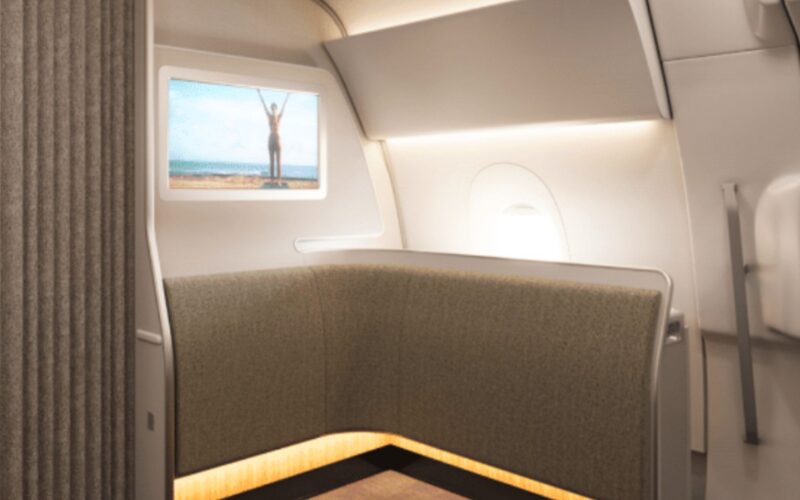Qantas has announced that it will feature customizable cabin lighting on its upcoming Project Sunrise ultra-long-haul flights, in an attempt to minimize jet lag and improve passengers wellbeing.
According to Qantas, the design is a result of more than 150 hours of testing in the Airbus Customer Definition Center in Hamburg. There, representatives from Qantas, Airbus, the University of Sydney’s Charles Perkins Centre and Caon Design Office created and tested hundreds of lighting patterns and sequences in an Airbus A350 cabin mockup.
The design, which includes simulations of sunsets and sunrises, is inspired by the colors of the Australian landscape. It is also grounded in circadian science.
According to the University of Sydney, light plays an important part in controlling our body clocks. By manipulating the timing, strength and wavelengths of light during a flight, it is possible to help passengers adapt to a destination’s time zone while in the air and reduce jet lag.
In 2023, Qantas and the Charles Perkins Center released preliminary findings on how to potentially reduce the impacts of jet lag by reshaping the inflight travel experience, based on world-first research conducted during test flights for Qantas’ Project Sunrise program.
Based on circadian rhythm models, the Charles Perkins Centre advised the optimal spectral irradiances for light to promote circadian adaptation to sleep-wake state. These were implemented and tested throughout the lighting workshops in Hamburg and adjusted for eye comfort and appearance.
The Australian flag carrier has concluded that the resulting lighting sequence will be tailored to help passengers adjust to their destination time zone before they set foot on the ground.
The trial has produced a series of 12 unique lighting scenes specifically for the Project Sunrise flights, including:
‘Awake’: Broad-spectrum, blue-enriched lighting to help customers adjust to the destination time zone and help them stay awake; a softer version is available for crew to choose based on cabin mood and ambience.
‘Sunset’: An immersive transition from a daytime mode into dark that moves through the colors of a sunset into a night sky with moonlight and slow cloud effect to relax customers and prepare them for sleep.
‘Sunrise’: Dynamic lighting effective for a transition from night to day that replicates an Australian sunrise rolling from the front of the cabin to the rear.
The main cabin will also have ‘Welcome’ and ‘Farewell’ lighting scenes for boarding and disembarking, as well as tailored scenes for taxi, take-off and landing and sleep.
Qantas International CEO Cam Wallace suggested that the scientifically informed lighting design was another critical component of the preparation for Project Sunrise flights, which will connect Australia’s east coast non-stop with London Heathrow Airport (LHR) and New York’s John F Kennedy International Airport (JFK).
“These world-first flights have been an opportunity for us to work with experts and build on our experience of long-haul flying to rethink the inflight experience with a focus on customer wellbeing and combating the effects of jetlag,” Wallace said in a statement.
He added: “One of the things that was clear from the research is the importance of light cycles and brightness in setting the body clock and that was the basis of this testing. Combined with the design of the cabins, specialized meal planning, and the movement program, this unique lighting sequence will help improve our customers’ comfort in the air and minimize their jetlag when they arrive at their destination.”


